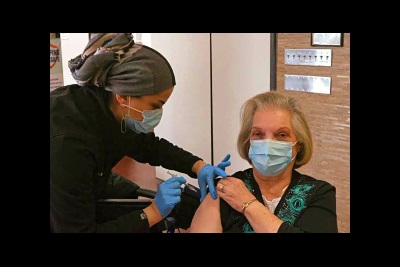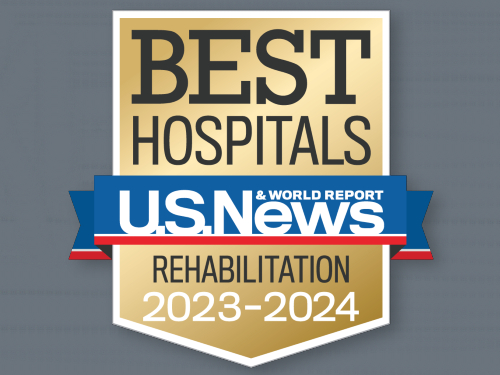TIRR Memorial Hermann’s roots go back to the 1950s, when the polio epidemic was at its height in the United States. Founded as one of the first polio treatment centers in the nation, TIRR Memorial Hermann transition with the discovery of a polio vaccine to apply its rehabilitation expertise to catastrophically injured patients.
Fast-forward more than 60 years to the COVID-19 pandemic, when physicians and staff at TIRR were quick to ensure that those who survived polio would be among the first to receive the new vaccine.

Rhonda Young got a call from a TIRR Memorial Hermann staff member on her 69th birthday in January 2021, asking if she would like a COVID-19 vaccine. “I said, ‘Yes!’ and we scheduled my vaccine for the afternoon of January 8. I was so surprised that they called. It was like happy birthday to me!” she says.

Polio left Young with a shorter left leg. “I had two surgeries to stimulate its growth—they were trying to catch my growth spurt after first grade and then again after second grade,” she recalls. “They were successful, and today I have only a quarter-inch difference in the length of my legs and scars around the knee on both sides. After those two surgeries, I thought I was done with the polio stuff.”

Young was diagnosed with post-polio syndrome in 2008 by affiliated physician Carlos Vallbona, MD. Dr. Vallbona emigrated from Spain to the U.S. in the 1950s during the raging polio epidemic and joined the medical staff at TIRR and the faculty of Baylor College of Medicine.
“Dr. Vallbona looked at me from head to toe and noticed the differences between the two sides,” she says. “He said, ‘I suspect more than your left leg was affected.’ I didn’t have respiratory problems, but I was tired and found I couldn’t do the things I normally did. A lot of things made sense after he diagnosed me.”
Young returns to TIRR’s Post-Polio Clinic annually for a checkup. “We pride ourselves on our post-polio program, which is one of only a few in the country,” Harrison says. “After we set up our COVID-19 vaccine clinic here, we vaccinated many other patients with spinal cord injury, brain injury or limb loss, all of whom met the criteria to be among the first vaccinated. We finished most of our patients in March 2021, and then opened up vaccines at the clinic to caregivers of patients, employees and after that, the community.”
